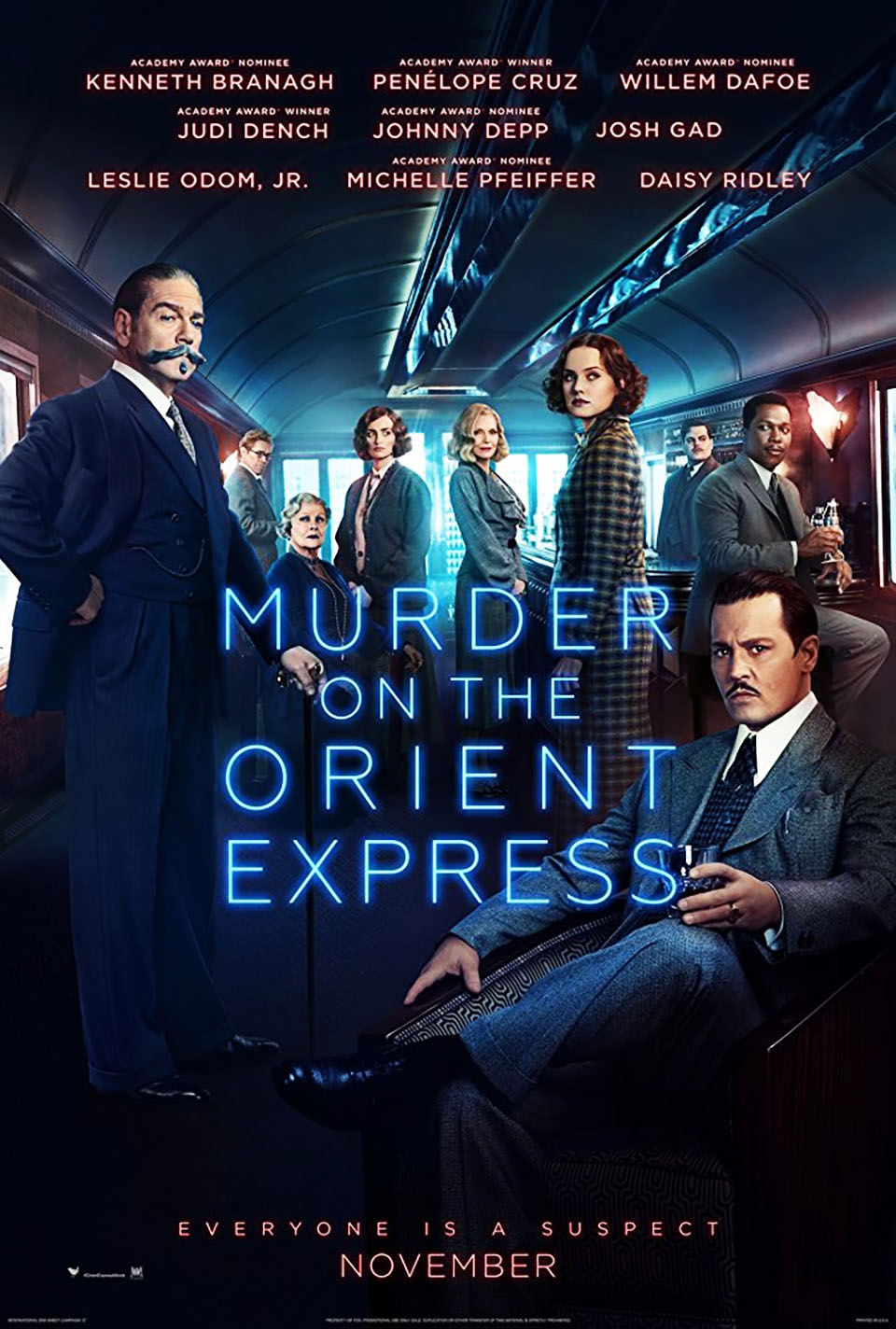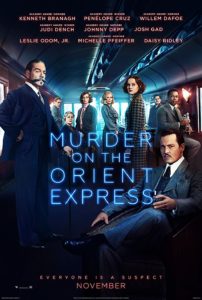

The original Christie novel this movie is based on was released in 1934 and first adapted to film in 1974.
Isaac Davies | Staff Writer
11/16/17
Hollywood interpretations of beloved books stand on shaky ground. The director wants to make a great cinematic experience while staying as true to the original work as he can. While the source books are amazing in their own right, a movie cannot alway be told in the exact same way.
If Peter Jackson’s Lord of the Rings films, for example, were a word-for-word recreation of the original Tolkien novels, no one would watch them. While the books are incredible, they would not have translated into engaging films if all of the really slow parts remained and some well-crafted action scenes picked up the slack. With this in mind, let’s talk about Murder on the Orient Express.
For those who have read the 1934 novel, you will not be disappointed. This movie translates hero Hercule Poirot perfectly. In the first 15 minutes of the film, Kenneth Branagh’s portrayal of the overly-eccentric, detail-consumed genius detective proves to be the same man Agatha Christie created. And, as any Christie buff will remember, the best part of any Poirot mystery is the extremely creative and complex cast of characters. The star-studded cast of this film brings each and every suspect to life. You can tell that Branagh — who also directed the film — let the actors work their magic.
For those who have not read the novel, this movie is amazing in its own right. Murder on the Orient Express is one book in a series of books starring the Belgian detective. In this mystery, Poirot finds himself on the Orient Express on his way from Istanbul back to London. As he tries to relax between cases, he is joined by 13 other passengers. Suddenly, one morning, they all wake up to one of the passengers in their bed with multiple stab wounds. As Poirot interviews every passenger, he begins to realize that there is more going on than he originally thought. He must comb through the lies and secrets of all 12 suspects while also trying to piece together the dead man’s true identity. With a snowstorm around them and time running out, Poirot must find the killer before the next train stop.
It is difficult to write a review for a mystery without giving too much away. However, throughout the film the audience has the opportunity to solve the mystery before Poirot does, if they are attentive enough. Every clue is shown, every detail is given, but the audience, just like Poirot, must sift through the lies and secrets to get at the truth.
The film’s cinematography is similarly engaging. Many of the shots when Poirot is in detective mode are from a bird’s-eye view. With such a powerful cast of actors, these shots seem like an odd inclusion, but it is a deliberate one. Frequently, Poirot talks about how crimes are committed by broken souls and talks about criminals as if they were not real people. His bird’s-eye view puts him in the position of God, allowing him to see into the souls of everyone around him. In fact, throughout the film, Poirot makes many comparisons between himself and God, the best instance of which is when he finally solves the crime and says, “No one will know what you have done except God … and Poirot.”
The scenes where Poirot is interviewing the other passengers are shot through a pane of glass. This glass diffracts the image of the character so that you see both the full head and shoulders as well as a reflection of just the characters face. This symbolizes the secrets and lies held by each passenger. As soon as Poirot discovers something about that passenger, the glass is removed from the shot, and you can see the actor’s face clearly.
These are just a few of the many powerful tools used by the director to tell the story through visuals as much as dialogue. He also uses a suspenseful and sweeping soundtrack, colors that pop like a Wes Anderson film and gorgeous and elaborate costumes. I cannot recommend this film enough. I sincerely hope that this director decides to make more of the Poirot mysteries.


